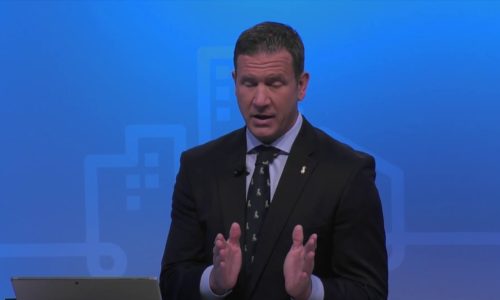Disc Herniation |
A very common problem is disc herniation can occur both in the neck and in the lower back, affirms Dr. Georgiy Brosuvanik, Spine Surgeon with Baptist Health South Florida.
If the nerve gets irritated or compressed inside the spine, it causes pain in the direction of where that nerve goes, he adds.
The specialist explains with a digital imaging how herniated disc looks like. He affirms when the nerve gets affected, patients cannot tolerate neurological pain.
Transcript
Dr. another condition I want to talk about are herniated discs, we have you over there, right there next to the picture to explain what the herniated disc is using the 3D image there. > So a very common problem disc herniations can occur both in the neck and in the lower back, so imagine you wake up one day and you have back pain or neck pain and then you feel that pain going down your shoulder and down your arm and all the way to the fingers or a more common problem where pain starts in the lower back and goes down the leg and all the way to the big toe. You may call it sciatica but the reality is that the scientific name for that is radiculopathy or inflammation of the root of the nerve, as that nerve exits the spine. So let me explain nerves leave the head they go through the spine out into the extremities, if a nerve gets irritated or compressed inside the spine, it causes pain in the direction of where that nerve goes. So for example the sixth nerve goes all the way down to the thumb and indexfinger that’s a common one to cause a problem, or what is commonly called a sciatic nerve actually is either the l5 or the s-1 nerve and that’s the one that goes down the bud and down the thigh and all the way down to the toes, very common problem. Now, now, think about the disc itself the discs create space between the bones and discs is soft with time like a jelly doughnut. Those discs will get smaller and smaller and wider but one day a disc may tear a piece may sneak out and as you see here when it sneaks out the nerve is so close that the piece of the disc that comes out can actually compress the nerve, and that’s the part that we call the root, that’s the little the little bugger that causes all of these problems for patients. Now back pain some patients can tolerate for years but when a nerve gets affected it’s like a light bulb it’s like an electrical problem and patients just cannot tolerate neurological pain.








